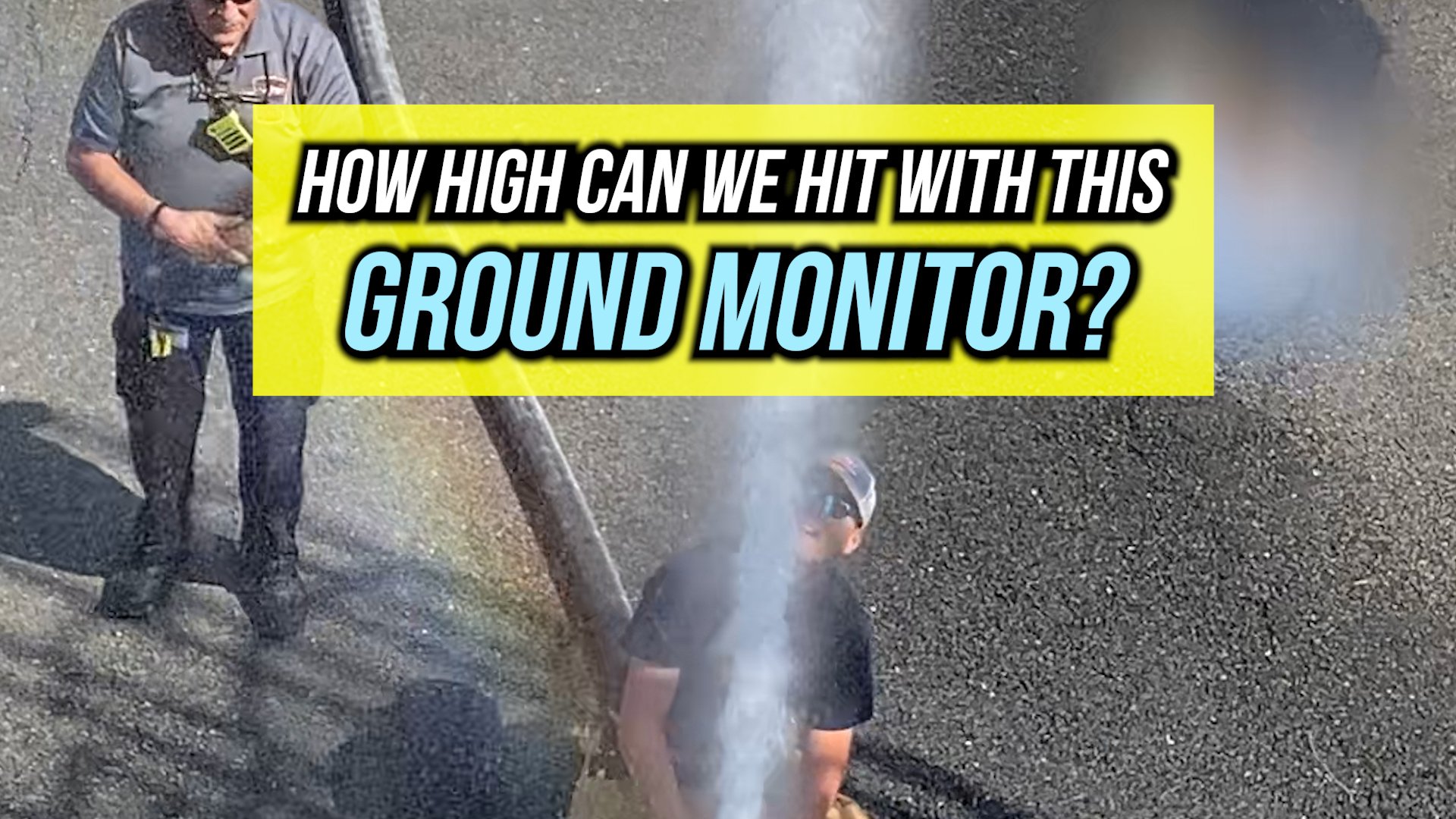Summary: The BlitzFire portable ground monitor, when properly supplied and pressurized, can deliver water all the way to the sixth floor of a building. In this test conducted in Westchester County, NY, a 3-inch supply line and 500 GPM at 115 PSI proved that a ground monitor can be an effective tool even in multi-story firefighting scenarios, making it a key asset in transitional attack operations.
How High Can a BlitzFire Ground Monitor Really Hit?
You’ve probably asked it. Can a ground monitor actually reach multiple stories in a structure fire? Turns out, the answer is yes — and we tested it to find out.
Field Test Location: Westchester County, NY
As part of Episode 1 of the Fully Involved series, we set up a scenario in Westchester County to push the limits of the BlitzFire portable ground monitor. The goal? See just how high we could go in a transitional attack setup — with real hydrants, real elevation, and real fireground tactics.
The Setup: Transitional Attack with Hydrant Support
The simulated fire was in a 20 x 20 room, fully involved. With only 750 gallons in the onboard tank, the first concern was water supply. Crews secured a hydrant and connected a 5-inch LDH to feed the engine. From there, a 3-inch line was deployed to the BlitzFire.
Key Details:
-
Primary Water Source: 5-inch hose from hydrant to engine
-
Monitor Supply Line: 3-inch hose
-
Flow: 500 GPM at 115 PSI
Let It Rip: Can It Hit Six Stories?
Once the monitor was dialed in and flowing, the stream easily cleared the fifth story — and reached the sixth. Not a mist or a drizzle — we’re talking solid water flow with ceiling-mapping impact.
Result: Direct hit at the sixth-floor level. No aerial device. No deck gun. Just a well-supplied BlitzFire on the pavement.
What This Means for Transitional Attack
In Westchester County, transitional attack often starts with ground monitors like this. They’re quick to deploy, need less manpower than aerials, and buy precious time while more units arrive. By cooling the ceiling and mapping water across upper stories, you knock back heat and reduce flashover risk before making entry.
Real Talk from the Crew:
“With a Mike Tyson punch, we went six stories up on a high-rise building... the water mapping across the ceiling was incredible.”
Why Use a Ground Monitor Instead of an Aerial?
When conditions allow, a ground monitor:
-
Deploys faster than an aerial
-
Requires fewer personnel
-
Keeps crews out of the immediate danger zone
-
Offers strong upward stream reach when supplied properly
For tight urban areas or short-staffed crews, it’s a force multiplier.



Comments